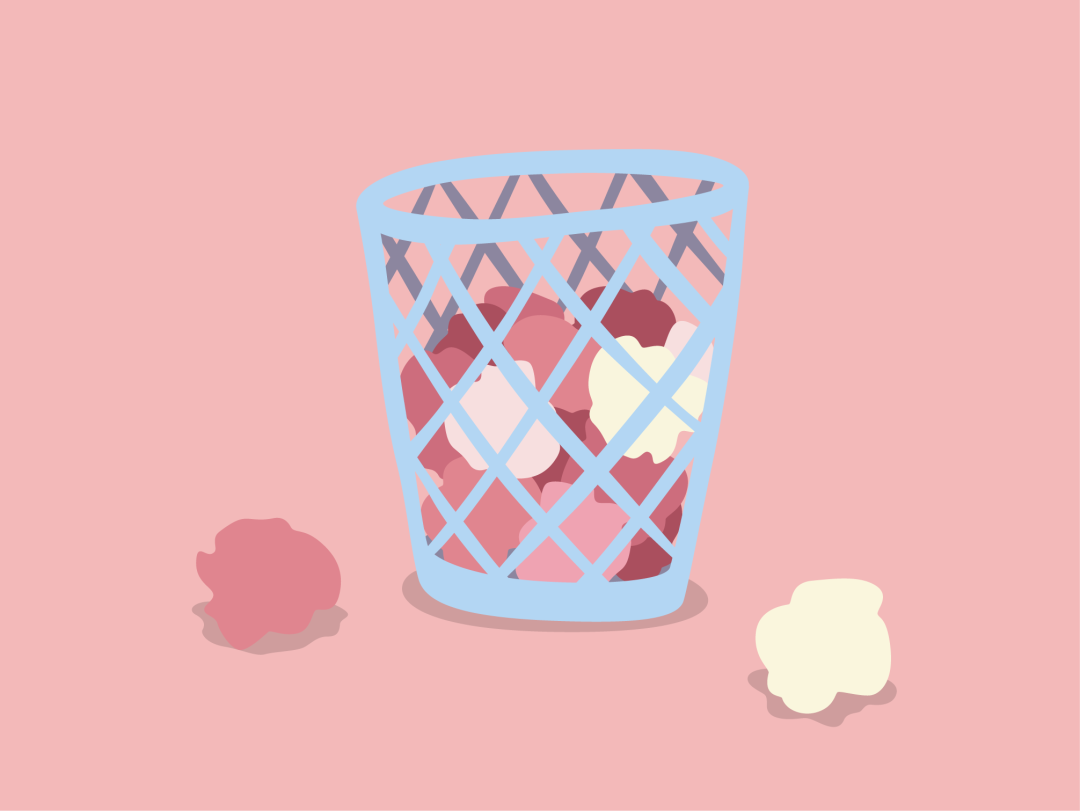Sign up to stay in the loop on new styles and sales!
Sign up to stay in the loop on new styles and sales!
#explainer
A Tampon Timeline
health
·5 min read

by Toni Brannagan | 01/16/2019
Have you ever seriously thought about where tampons come from? (Considering how often I ran into the question “Were tampons invented to plug bullet holes?” while doing research for this blog, I’m gonna go with nah.)
Period products are something we tend to use habitually, and most of us hardly ever stop to consider what goes in them, or what their beginnings are. It may be hard to think of something like tampons, which seem pretty simple and straightforward, as an innovation, but they were truly a game-changer for people with periods when they debuted. (Sidenote, I’m also always surprised by how truly dramatic history has been on the subject of menstrual hygiene.)
let’s talk tampons
As it turns out, tampons have been around a whole lot longer than you think… just sans the floral marketing and pink packaging.
While rags fashioned into makeshift pads were the most popular form of managing periods for quite a while, ancient Egyptians used softened papyrus, grass, or fabric. Sounds kinda scratchy (eek), but whatever worked! Some historians have even theorized that the Isis knot symbol—found in every flash tattoo book ever—may be representative of these rudimentary tampons.
Due to a mistranslation, it used to be said that Hippocrates recorded the use of lint wrapped around sticks of wood to staunch menstrual flow, but that has since been debunked as a myth.
The first ~official~ tampon, closer to what people know and use today, hit the scene in 1931 from the mind of Dr. Earle C. Haas, a doctor from Colorado. Haas’ wife really hated pads, and he was an OG male feminist (I have not scrolled through his Twitter feed in its entirety, pls don’t quote me on this).
Ole’ Earle’s tampons look pretty similar to the ones your school nurse would toss you after an unfortunate accident you noticed two hours too late — the body was made of thick cotton and featured a cardboard applicator.
Soon after, in 1933, Gertrude Tendrich bought the patent and founded Tampax, which I’m sure you’ve heard of. Here’s where things get a little complicated.
bumps in the road
Chances are, you’ve heard the myth that tampons can take your virginity. It’s a notion that still exists today, along with myriad misconceptions about menstruation (say that five times fast). So, of course, when Tampax debuted their shiny new tampons, people threw a massive hissy fit.
In addition to the whole virgin thing, it was *not* kosher for ladies to be touching themselves in any way, which apparently included inserting tampons. Publicly marketing the product, of course, was also not an option. As a result, Tampax’s first commercial effort failed miserably. However, the tampon train quietly chugged along.
You can read more about all the innovation you could imagine in the world of tampons, from plastic applicators to withdrawal strings, in this super-detailed article from The Atlantic, but I’ll give you the tl;dr.
Brands started to get hip to how selling tampons to the mass market could work around the 1940s — and the big strategy was tapping into the culture of concealment and secrecy about managing periods. The first Kotex tampons were literally called “Fibs.”
Perfumed tampons hit the market in the 1970s, and while people have developed allergic reactions to unnatural scents up their 🙀 from the very beginning, scented period products are still a thing today, for some wild reason. (Okay, I really hate judging people’s personal choices, and I don’t do it often, BUT DON’T USE SCENTED PRODUCTS INSIDE YOUR VAGINA. PLEASE.)
I completely understand the desire to *hide* your period, or to just find a solution so you’re not forced to worry about it for a whole week. The “out of sight, out of mind” mentality surrounding menstruation, however, has contributed to a culture that creates unsafe and unhealthy situations for people with periods.
In 1975, Proctor & Gamble introduced a new, “innovative” tampon called Rely. Composed of synthetic materials I can’t pronounce, Rely tampons were designed to be worn for an entire period. If that sounds too good to be true, that’s because it was. By 1980, after 812 reported cases of toxic shock syndrome, Rely was pulled from shelves — although our mothers will continue to obsessively warn us about keeping our tampons in too long for the remainder of eternity.
learning from the past
Soon after Rely, people started wondering what was in their tampons… and soon noticed that big name companies weren’t too keen on being transparent about their ingredients. While most people still rely (not *that* Rely) on those drugstore names today, there has been a growing market of organic cotton tampons, sold by companies offering transparency to people with periods.
More and more, the single-use plastic applicators covering most commercial tampons have been a concern. Applicator-free tampons are popular internationally, but according to a study, over 80% of the tampons Americans bought in 2015 included applicators.
Despite the preference for applicators, it’s clear that many people with periods care deeply about reducing their plastic waste — that’s why our team has been hard at work to help y’all out. Since announcing the development of a reusable tampon applicator in 2016, we’ve grown a waitlist of thousands! Next week, we’re proud to finally introduce re.t.a: The first FDA-cleared reusable tampon applicator to hit the market.
If there’s one thing that’s been learned from history, it’s that the needs of people with periods are important, and addressing them is key!
Is there anything that grinds your gears about using tampons, or those pesky applicators? Air your grievances in the comments!
Toni Brannagan is a writer and was the former Copy and Content Manager at Thinx.
by Toni Brannagan


